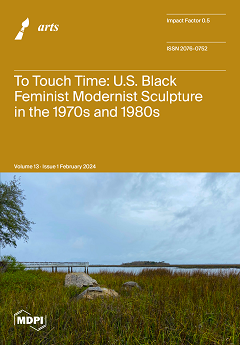Textile materials are an essential part of contemporary architecture, the environment, and urban spaces due to their unique appearance and qualities, as it is now possible to achieve both a structural function and an aesthetic quality with textiles. As colour is one of
[...] Read more.
Textile materials are an essential part of contemporary architecture, the environment, and urban spaces due to their unique appearance and qualities, as it is now possible to achieve both a structural function and an aesthetic quality with textiles. As colour is one of the most important characteristics of textile material, it is also important to understand the relationships between colour and textile material with different surface qualities. In order to explain the complexity of different textile materials and the appearance of colours, which consequently affects the colour properties, this paper analyses this phenomenon. The presented research analyses the dependence of the reproduction quality and colour appearance on fabrics of different construction and structural characteristics, i.e., the texture of the textile material, printed using digital inkjet technology. The aim of this work is to investigate the influence of various structural features of textiles on the colour appearance of digitally printed textile substrates, to monitor the quality of colour reproduction, and to analyse the behaviour of a reactive dye droplet on textile substrates. Printing of a particular shape was performed using a Dimatix Materials Printer DMP-2831 piezoelectric inkjet device (provided by the J. Stefan Institute, Ljubjana, Slovenia; manufactured by Fujifilm Dimatix Inc., 2230 Martin Avenue, Santa Clara, CA, USA). The behaviour of the ink delivered by the needle of the tensiometer DSA20E, Kruess GmbH (provided by the J. Stefan Institute, Ljubjana, Slovenia; manufactured by Kruess Scientific Instruments (Shanghai) Co., Ltd. Futong Dong Dajie 10 Baoneng Center, Tower B, Room 605 Chaoyang District, Beijing 100102, China), on the surface of the fabric was analysed. The samples were digitally printed on a Mimaki digital printer Tx2-1600 (provided by University of Ljubljana Faculty of Natural Science and Engineering, Slovenia EU; manufactured by Mimaki, 2182-3 Shigeno-Otsu, Tomi-city, Nagano, Japan), with reactive dyes, which were first pretreated in a bath with a specific solution. The statistical method of image analysis and microscopic imaging were used to obtain the characteristics of the porosity, texture, and roughness parameters. All results are presented from colouristic analysis based on the objectification of colour and colour differences. The objective values of the parameters of lightness (L*), chroma (C*), and hue (h°) show the significant influence of the structure and properties of the substrate on colour reproduction, and significant changes were obtained, which were confirmed by the evaluation of the colour differences. The results confirm the influence of the substrate structure on colour properties. Furthermore, it is essential to consider this complexity in the context of environmental colour design when utilising (coloured) textile installations/materials in architecture and urban spaces, i.e., in the environment.
Full article




